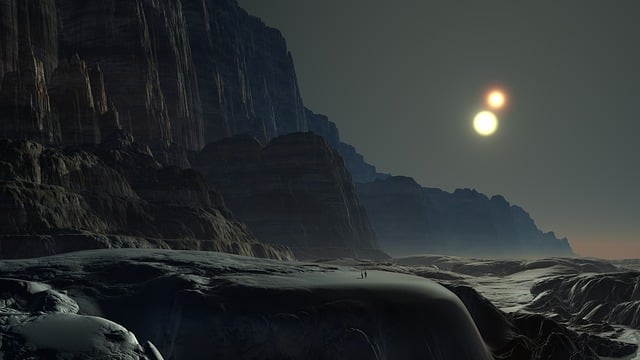CAD-based structural modeling is a precise 3D visualization technique for steel and concrete structures. It creates detailed models from rebar connections to beam spans, enabling photorealistic renderings with authentic textures, light interaction, and material properties. Lighting simulation and advanced rendering engines enhance accuracy, streamlining the process for dynamic feedback and refining complex architectural designs.
“Unleash the power of visual storytelling with photorealistic steel and concrete structure visualization. In this comprehensive guide, we explore the art and science behind creating stunning, lifelike renderings. From CAD-based modeling as the foundation for accurate structural representations to mastering materials and textures, we delve into every facet. Learn how advanced lighting and rendering techniques transform complex designs into realistic landscapes enhanced by steel structures.”
CAD-based Modeling: Foundation for Steel and Concrete Visuals
In the realm of photorealistic steel and concrete structure visualization, CAD-based structural modeling stands as a cornerstone. This advanced technique leverages computer-aided design (CAD) software to create precise digital representations of complex architectural structures. By translating intricate real-world designs into detailed 3D models, CAD enables engineers and architects to explore various materials, forms, and functionalities before construction begins. The result is a foundation of accurate visual data that drives the entire visualization process.
The integration of CAD-based structural modeling facilitates the creation of hyper-realistic visuals showcasing steel and concrete structures in their full glory. This technology allows for meticulous attention to detail, from the intricate interweaving of rebar in concrete to the sleek, precision-engineered components of steel frameworks. By leveraging these models, visualization artists can craft photorealistic renderings that not only capture the structural essence but also convey a sense of scale, proportion, and material authenticity, setting new benchmarks for architectural representation.
Structural Complexity: From Design to Photorealistic Representation
In the realm of architectural visualization, presenting complex steel and concrete structures with photorealistic accuracy is a meticulous art. Structural complexity, often a defining feature of modern engineering marvels, poses unique challenges when translating design concepts into visually stunning representations. CAD-based structural modeling emerges as a game-changer in this domain, enabling architects and visualizers to create intricate 3D models that serve as the foundation for photorealistic renderings.
The process involves meticulously mapping each structural element, from the finest rebar connections to the largest beam spans, ensuring accuracy down to the smallest detail. Advanced rendering software then brings these digital blueprints to life, utilizing sophisticated algorithms to mimic the behavior of light interacting with steel and concrete surfaces. This meticulous attention to detail results in visualizations that double as tangible representations of the final structure, providing stakeholders with a clear and immersive preview of the project’s potential.
Materials and Textures: Bringing Steel and Concrete to Life
In the realm of photorealistic visualization, bringing steel and concrete structures to life involves a meticulous process that combines cutting-edge technology with artistic precision. CAD-based structural modeling serves as the foundation, enabling designers to create detailed digital models that accurately represent these robust materials. Each element, from the smoothest curve of a beam to the roughest texture of a concrete surface, is meticulously crafted and mapped for visual authenticity.
Advanced rendering techniques further enhance the realism by simulating light interaction with these materials. Whether it’s the lustre of polished steel or the subtle variations in concrete’s finish, these textures are digitally recreated to capture every nuance. This meticulous attention to detail ensures that the rendered images not only look realistic but also convey the structural integrity and aesthetic appeal of steel and concrete constructions.
Lighting and Rendering: Creating Realistic Scenery with Steel Structures
Lighting and rendering play a pivotal role in photorealistic steel and concrete structure visualization, bringing digital designs to life with astonishing accuracy. By leveraging CAD-based structural modeling, architects and designers can create intricate 3D models that serve as the foundation for realistic visualizations. This process involves carefully simulating light sources, considering material properties, and applying advanced rendering techniques to capture every nuance of the structure’s surface.
The strategic placement of lights is crucial to highlight the desired features of the steel framework while casting shadows that mimic natural conditions. Real-time rendering engines further enhance this process by enabling dynamic lighting adjustments on the fly, allowing for immediate feedback and precise visual refinements. This level of detail ensures that the final renders not only look photorealistic but also accurately convey the structural integrity and aesthetic appeal of the design.
Photorealistic steel and concrete structure visualization, powered by CAD-based structural modeling, has revolutionized how we present architectural designs. By navigating complex structures and incorporating realistic materials and textures, along with precise lighting and rendering techniques, it’s now possible to create stunning visual representations that bridge the gap between design concept and finished product. This advanced approach not only enhances communication among stakeholders but also offers a captivating glimpse into future urban landscapes.
